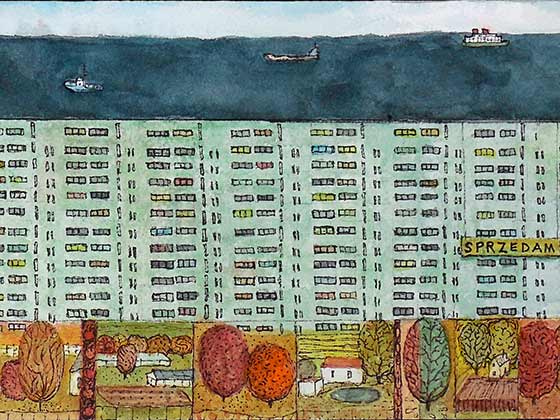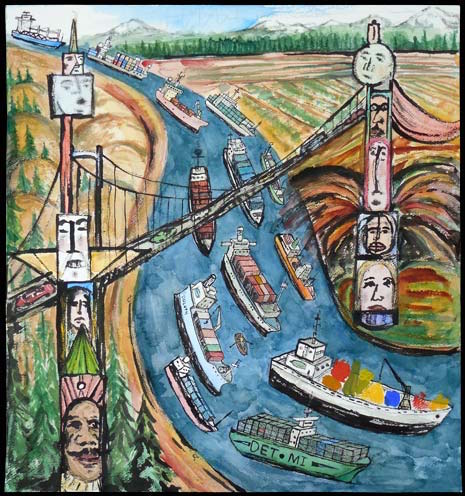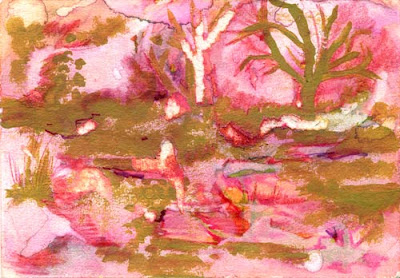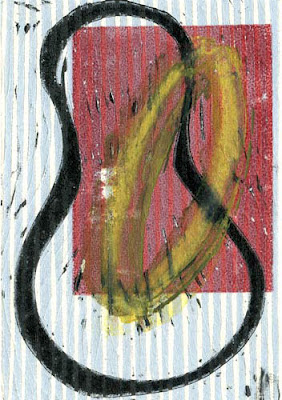Advances in travel and comunication may make the world seem small. However, every once in a while one is in awe of a place larger than one could imagine. I had this experience as a child when I saw the swimming pool at the Flanders Hotel in Ocean City, New Jersey. The pool was so impressive that I found it both facinating and a bit frightening. In my child’s mind I thought, who would build their own ocean and how could someone get to the middle without drowning.
It was hard to imagine being struck by such a similar feeling as an adult. However, while on a train from the Polish city of Gdańsk to the town of Sopot, I saw building larger than my conception could accept. I later read online that such a building may have up to 6000 people living it. To be living in the middle of it seems simultaneously intruiging and overwhelming.
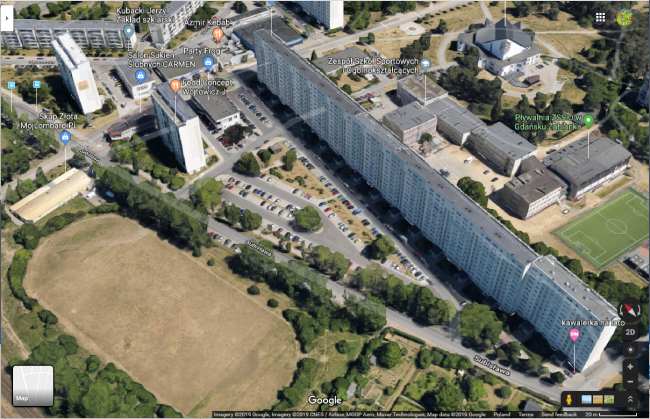
Along with the fleeting feeling of being impressed by the enormity of the building, there was an experience of being on a train and on a trip to the sea. I created a drawing in an attempt to document this memory. In the drawing below the autumn day, the building, and the journey to sea become locked together.

It is easy to realize that the two places described, the pool and the building, are small compared to oceans, planets, and the wider universe. However, size is relational and our thoughts are expansive. With reflection the cracks and corners of our existance may yield wider vistas. Description and a creative perspective provides ways to unfold an endless stream of details and reinvent a sense of wonder.
